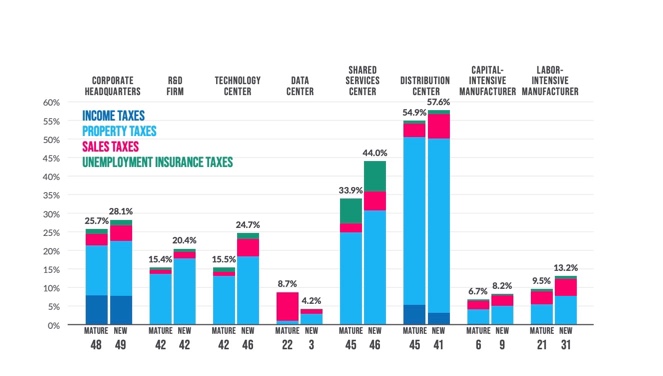New businesses face higher taxes in Minnesota than older businesses
Data from the Tax Foundation shows that Minnesota does not rank favorably in business taxation. In the Foundation’s most recent State Business Tax Climate Index Minnesota ranked 46th among the states for business taxation. One of the main reasons for that is Minnesota’s high income tax rates.
Statutory rates aside, the Tax Foundation also notes that there are some issues with our tax structure that may be making our state hostile to business. One such issue, which is not looked at very often, is non-neutrality.
Non-neutralities in the tax code happen when effective tax rates –– after accounting for such things as incentives, credits, apportionment and throwback rules –– paid by businesses differ significantly across industries and even among businesses in the same industry due to some factors.
This is an issue that the Tax Foundation explores more deeply in their study Location Matters: The state tax costs of doing business. In the study, the Tax Foundation calculates effective tax rates paid by eight different firms: “a corporate headquarters, a research, and development (R&D) facility, a technology center, a data center, a shared service center, a distribution center, a capital-intensive manufacturer, and a labor-intensive manufacturer,” at two stages of their lifecycles –– new and mature.
These are all firms that are very mobile and are therefore bound to be impacted significantly by taxes. This also means that states do try to target these firms with incentives as well as subsidies. The study specifically analyzes five taxes affecting businesses: Corporate income taxes, Gross receipts and franchise taxes, Property taxes, Unemployment Insurance Taxes, and Sales tax on business equipment or inputs.
In their study, the Tax Foundation finds huge differences in effective tax rates among the industries analyzed. Tax rates for mature industries, for example, range from a low of 6.7 percent to a high of 54.9 percent. Similarly for new firms, tax rates range from a low of 4.2 percent to a high of 57.6 percent.
Additionally,
Minnesota offers few incentives, which, combined with high unemployment insurance and property taxes (and high income taxes for firms that sell in-state), yield substantially above-average tax burdens for most new operations
Indeed, seven of the eight new firms in Minnesota face higher tax rates compared to mature firms, except for data centers. New businesses in the Shared Services Center face a tax rate that is ten percentage points higher compared to mature businesses in the same industry. While generally, some states also do tax new businesses higher, most of them offer significantly lower effective tax burdens compared to Minnesota.

In an ideal world, the tax code should treat all businesses equally. For most states, this is not the case, and to some extent, this is something that can be relieved.
In Minnesota, for instance, low tax rates for capital-intensive manufactures are due to the state’s single sales apportionment formula and the exclusion of manufacturing equipment from the sales tax.
Shared data services, on the other hand, face high tax rates due to “the state’s large taxable wage base and high maximum rate for unemployment insurance taxes.” And distribution centers face a high tax rate due to property taxes, which make up a huge majority of the overall tax burden for businesses in that industry.
It is obvious that Minnesota’s economy can benefit from lower tax rates all across the board. But this study brings to light something else for lawmakers to keep in mind –– statutory rates are not the only factor that matters when it comes to taxation. And how business taxes are currently structured in Minnesota disproportionately raise taxes for new businesses compared to older firms.